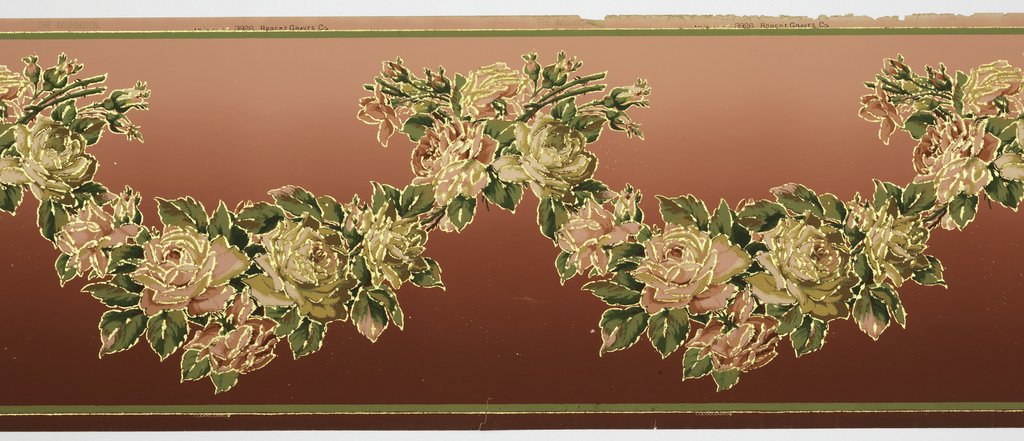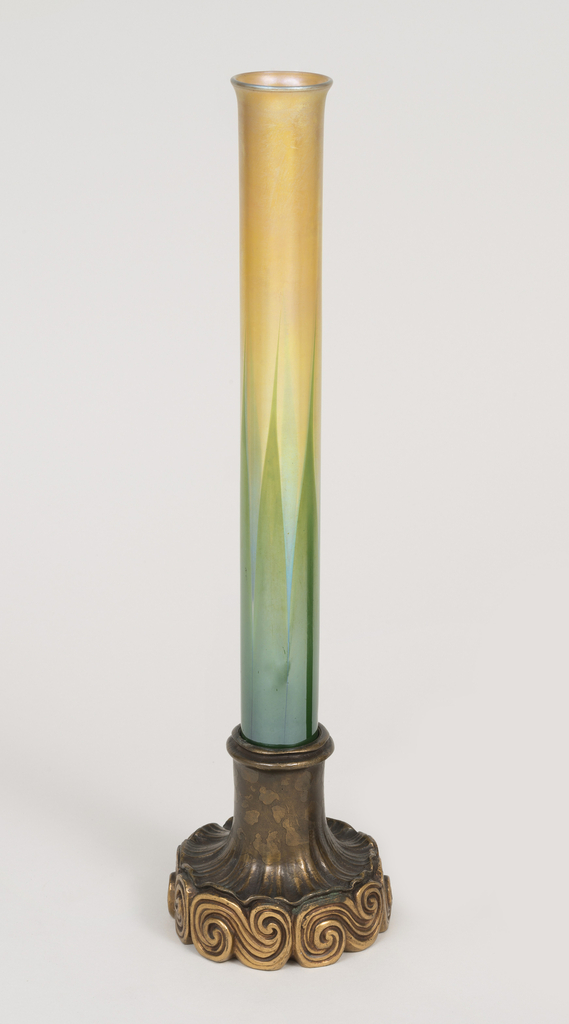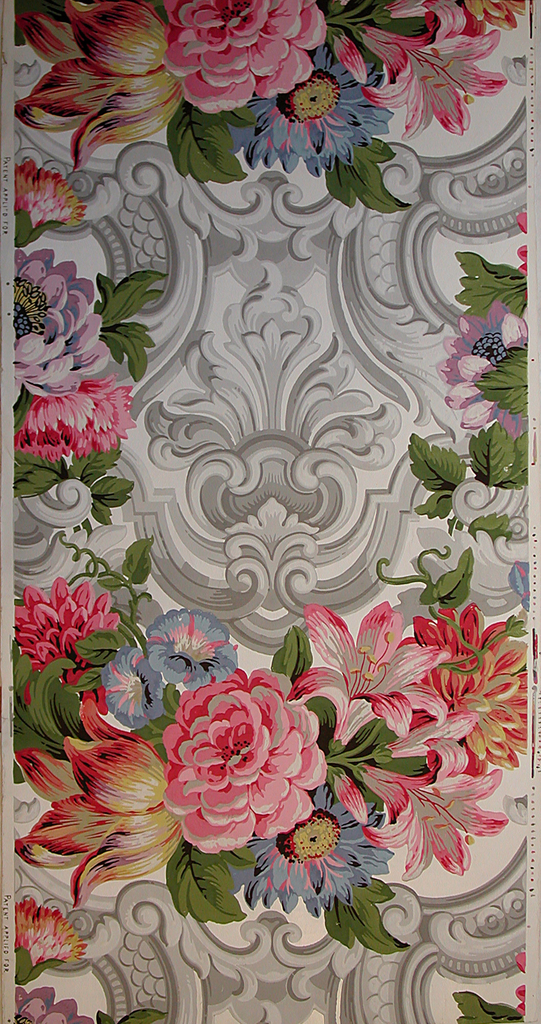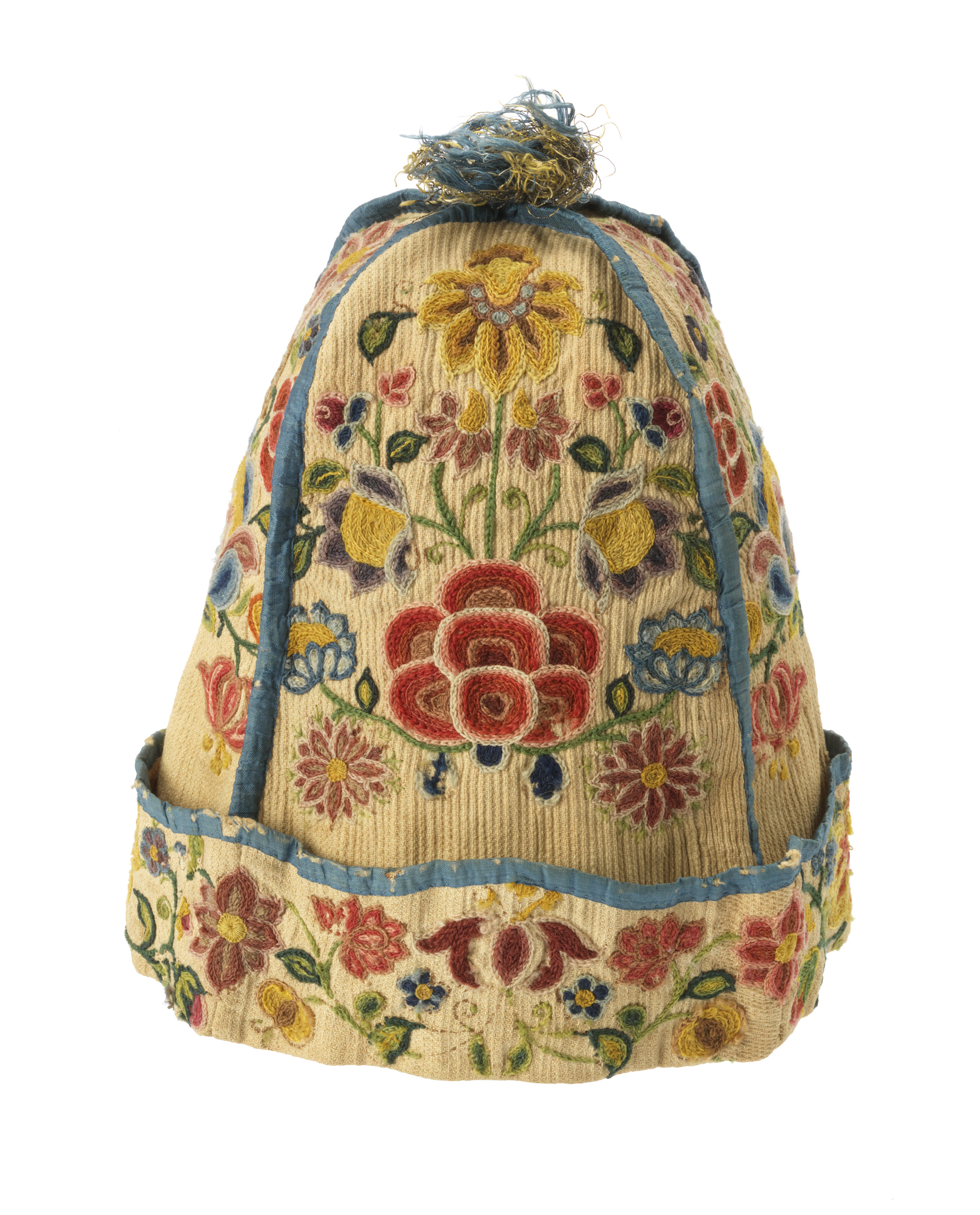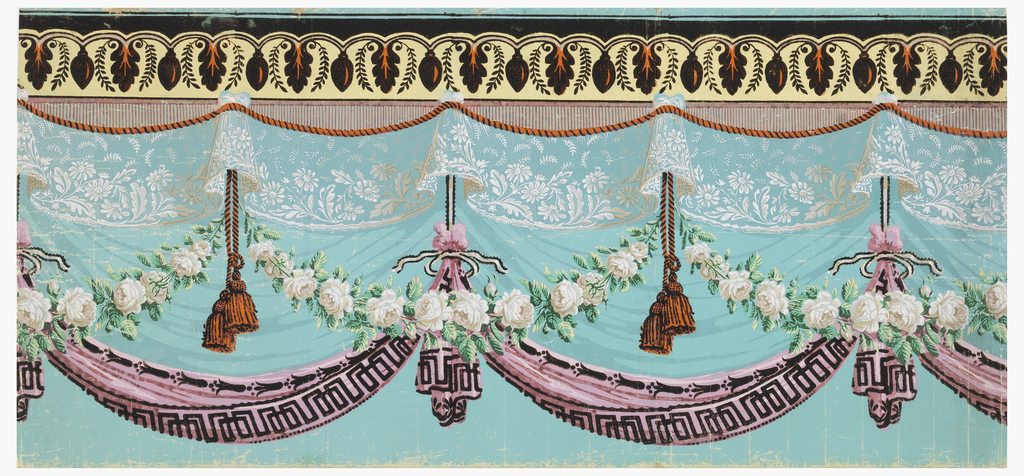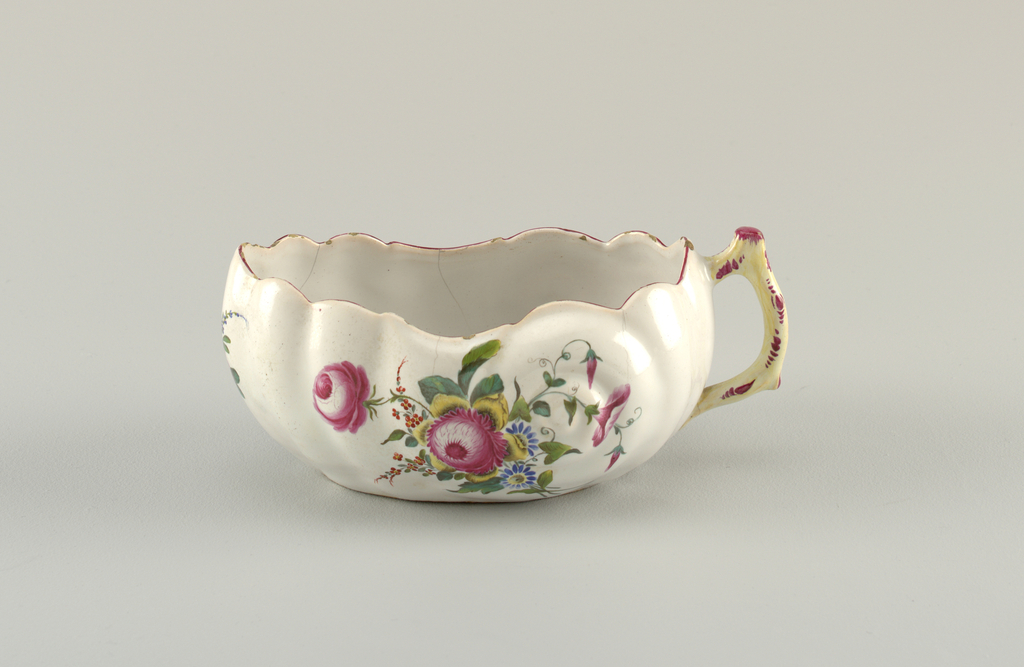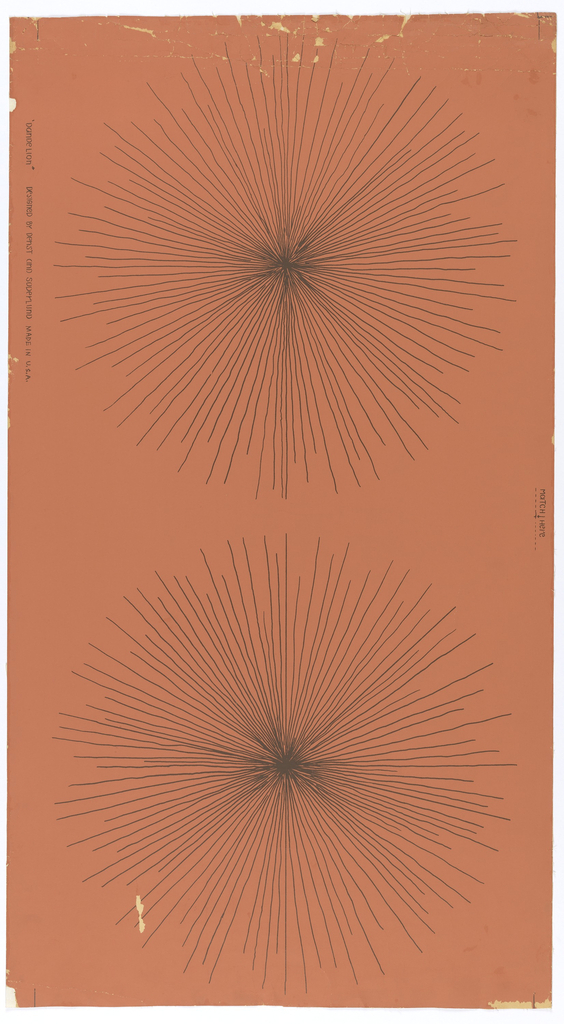Jack Lenor Larsen (b.1927) is one of America’s most prolific and innovative twentieth century textile designers. He came to prominence in the 1950s with his distinctive hand-woven casement fabrics for the commercial contract market. But he was not surprised to later become best known for his sumptuous printed fabrics like Primavera. For Larsen, it was...
Robert Graves Co. was founded by a Brooklyn-based Irish immigrant, and was one of the most successful wallpaper manufacturies in the United States from the 1860s to the 1920s. This wallpaper frieze was made by the company c. 1905-1915, and would likely have been marketed with a coordinating sidewall and ceiling paper. It features a...
This slender bud vase by Louis Comfort Tiffany is an exquisite example of the favrile glass technique that the Tiffany Glass and Decorating Company developed in the last decade of the nineteenth century. While Louis C. Tiffany experimented with glassmaking leading up to this time, he used outside suppliers to provide him with the production...
This sidewall was donated to the Cooper Hewitt by D. Lorraine Yerkes in 1941, along with several dozen other antique and contemporary wallpapers from her collection. Ms. Yerkes was an independent decorator, and founding member of the American Institute of Decorators, which still exists today as the American Society of Interior Designers. She ran her...
This 18th-century hat, called a nightcap, is decorated with crewel, a wool yarn often used to embroider linen. Known as crewelwork, this technique was frequently applied to nightcaps, where it was worked into bouquets of exotic and imaginary flowers and winding stems. Similar motifs also appeared on colorfully dyed chintz, an Indian cotton textile that...
Traditionally, wallpapers have imitated more expensive materials, such as architectural details, painted wall decorations, wood grains, marble, and, most often, textiles. In the mid-18th century when wallpapered rooms became a prevailing fashion in England and France, wallpaper borders were as important a decorative element as the coverings themselves. A brilliant swag of printed paper flowers,...
Wallpaper can be used to create a very personal space, one reflecting the style and/or temperament of its creator, or possibly to inspire the desired mood. The myriad wallpapers in production at any given time range from ultra-minimal and loose, to dense pattern-rich designs. Peacock Garden, a beautiful design of flora and fauna by Walter...
At first glance, you might think this is a sauce bowl or pitcher used at the dinner table. However, it is something quite different all together, and would most definitely be an unwelcome addition to a table spread. The bourdalou, in fact, was a type of chamber pot that was specifically used by women up...
This sidewall was designed by the firm Denst & Soderlund in 1952-53. Thin, wavering black lines radiate out from a central point forming a large round motif resembling a dandelion flower gone to seed. The motif is repeated vertically on the panel, and is so large that it only takes two “dandelions” to cover the...

